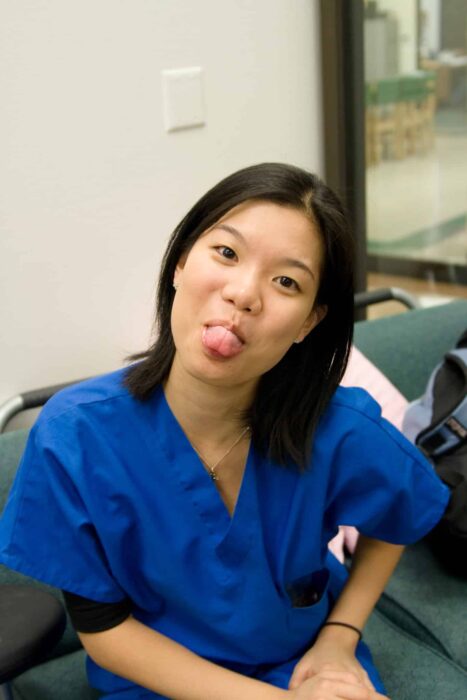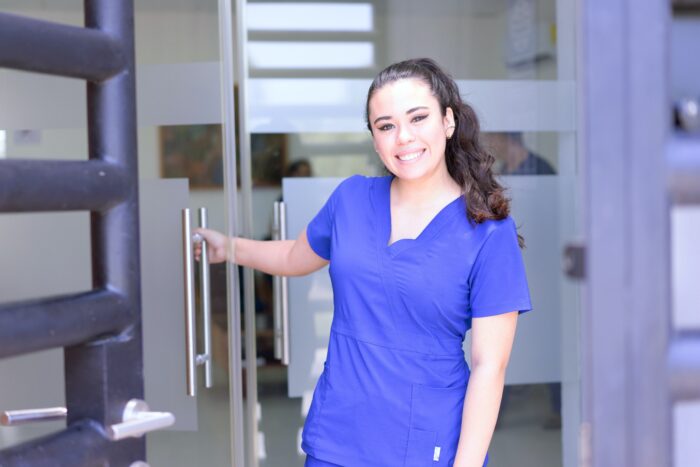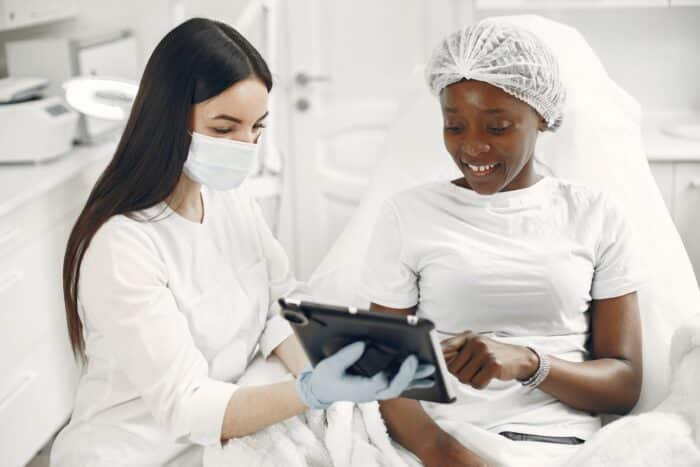If you are interested in entering the healthcare industry and are looking for a career that will help you do so much sooner than the conventional method, medical assistance is the career for you.
Medical assistants are healthcare workers that provide support services to physicians and other healthcare professionals. Their duties generally include administrative and clinical tasks, from scheduling appointments to helping physicians with bedside procedures.
There are many types of medical assistants, and some also work under different specialized physicians; for instance, dermatology medical assistants work in close proximity to dermatologists.
They mainly help patients with irregularities related to the skin, from acne to skin cancer.
Also see: Is Medical Assistant a Good Career?
Read on to find out everything you need to know about dermatology medical assistants, what they do, where they work, how much they earn, and how to become one.
What Is a Dermatology Medical Assistant?
A dermatology medical assistant is a healthcare worker who assists dermatologists and works close to them.
Their primary duties entail helping patients with any issues regarding the skin, such as cosmetic irregularities or skin concerns.
See: 12 Reasons to Become a Medical Assistant
What Does a Dermatology Medical Assistant Do?
A dermatology medical assistant usually performs the same tasks as a regular medical assistant. They are generally required to complete both clinical and administrative tasks.
Let us look at what their tasks might entail in a clear sense.
Clinical Dermatology Medical Assistant Duties
- Assist Physicians With Procedures-
Dermatologists often perform procedures within their clinics or offices. Medical assistants are required to assist physicians with these procedures as and when required. - Recording Patient’s Vital Signs-
All healthcare clinics generally require measuring patients’ vital signs before going for any further procedure or consultation. This usually involves recording heart rates, blood pressure, temperature, and respiratory rates.
See: Can Medical Assistants Draw Blood?
- Collect Samples-
In dermatology clinics or offices, the collection of samples, such as biopsies of the skin, is often required to be analyzed. Dermatology medical assistants can help physicians by collecting and labeling the sample before analysis. - Document Findings-
It is essential to keep an accurate record of all the changes observed in the skin conditions, as some dermatological issues change over time. Dermatology medical assistants can keep track of these changes by taking pictures and referencing them during future appointments. - Apply Ointments-
Medical assistants working with dermatologists often also have to assist with applying any ointments or creams for the patient’s skin.
Learn more about Certified Clinical Medical Assistants
Administrative Dermatology Medical Assistant Duties
- Schedule Appointments-
Dermatology medical assistants are required to assist patients with scheduling appointments. They also have to keep the physicians’ schedule in mind and keep the office or clinic functioning smoothly. They also sometimes have to call patients to follow up on their appointments. - Greet Patients-
Medical assistants are usually the first point of contact for patients when they contact a physician’s office. Therefore, they need to have good customer service and communication skills to handle the queries and requests of the patients. - Handle Billings-
One of the key tasks of a medical assistant is to keep track of and assist patients with payments and billings. They can also help patients with any insurance claims. - Answering Calls-
As mentioned earlier, medical assistants are often the first point of contact for patients. Hence they are also responsible for answering phone calls and solving any queries or issues related to appointment scheduling, basic medical questions, or medication refills.
Read more on Medical Administrative Assistant
Where Do Dermatology Medical Assistants Work?
Dermatology medical assistants work wherever dermatologists can be found working, such as a dermatology clinic or a hospital. They also sometimes work in long-term care centers or cosmetic offices.
Dermatology medical assistants work with skin conditions, which means that they usually face patients of all ages and backgrounds with all types of skin concerns.
Since medical assistants also perform clinical tasks, they are required to stay on their feet for long hours. They are mostly always seen multitasking since most of their jobs entail working in fast-paced environments.
More on Where Can Medical Assistants Work?
What Are The Skills Required to Become a Dermatology Medical Assistant?
Apart from the required standard medical assistant skills, dermatology medical assistants are required to have some specific skills to be considered valuable healthcare workers, such as:
- Customer Service Skills-
Medical assistants are often communicating with patients, both on and off calls. Hence, they need to have good customer service and communication skills to be able to address all their concerns and queries appropriately. - Basic Medical Terminology-
In any healthcare profession, all healthcare workers are usually required to have knowledge of the basic medical assistant terminology used in their fields. Medical assistants are expected to accurately describe all procedures, anatomy, and medications. - CPR Certification-
All healthcare personnel and required to have a CPR certification. - Observation Skills-
Even though medical assistants are not allowed to diagnose any conditions, having good observation skills can help them identify any irregularities that the physician might have missed. - Steady Hands-
Medical assistants are required to also assist physicians with bedside procedures and therefore need to be able to handle all the delicate tools and be comfortable working with steady hands.
Dermatology Medical Assistants Job Outlook & Salaries
According to the U.S. Bureau of Labor Statistics (BLS), the national annual average salary for medical assistants across the country is $37,190, or around $18 per hour.
These figures are highly dependent on a variety of factors, such as experience, job location, certification, or the type of specialty. For instance, certified medical assistants tend to earn 10% more than uncertified medical assistants.
Even though there isn’t much government data available for dermatology medical assistants and how much they make, figures from various job board sites report that these medical assistants make up to $18 to $25 per hour. This is, again, dependent on job location and experience.
Read more on: Medical Assistant Job Outlook
The U.S. BLS also further reported that the job growth related to medical assistants is expected to rise by 16% by the year 2031. This makes it evident that medical assistance has a fairly positive job outlook as compared to other professions.
Also see: How to get Medical Assistant jobs with no experience

Do You Want To Become a Medical Assistant? Check Out Free Medical Assistant Masterclass!
In our masterclass you learn:
- How to be a medical assistant faster…in just 4 months!
- Avoid student debt & driving to classes
- #1 thing employers want from Medical Assistants
- How to stand-apart & get a university certificate for a strong resume
How To Become a Dermatology Medical Assistant?
Even though it may sound intimidating, becoming a dermatology medical assistant is not that hard. The process is identical to a regular medical assistant.
Let us take a look at the process-
1. Complete Your High School Diploma or a GED-
Becoming a medical assistant is considered to be the easiest way to enter the healthcare industry since there is no requirement for a degree. However, you need to complete your high school diploma or a GED to start becoming one.
2. Get Medical Assistance Training-
After you have completed your high school diploma, you will need to undergo medical assistance training. This will help you gain the foundational knowledge and skills required to perform the daily tasks of a medical assistant.
There are three main ways of completing your medical assistance training-
- Getting an associate’s degree from a technical university
- Completing a diploma from a community college
- Completing an online training program
Also see: Medical Assistant Degree vs Certificate
It is highly recommended that you choose an online training program to complete your medical assistant program, as it offers several advantages.
It allows you to complete your training faster, in as little as 6 months, so you can get certified as a medical assistant much faster.
It allows you to learn at your own pace and time schedule and at the comfort of your own home. Finally, it also costs significantly less than its alternatives (See: Medical Assistant Programs Cost).
Read more on: Is Medical Assistant Degree Required?
3. Get Certified and Apply for Jobs-
After completing your medical assistant training, you will need to get certified as a medical assistant by clearing the certification exam. Even though not necessary, employers highly prefer certified candidates, and they also earn more.
There are many different certifications available. However, the most common and accepted certifications are the CCMA and CMA certifications.
Read more on Which Medical Assistant Certification is the Best?
After you earn your certification, you can start applying for jobs in the work setting of your choice, such as a hospital or a clinic.
See also: Medical Assistant Certificate Requirements
See Other Types of Medical Assistants:
- Pediatric Medical Assistant
- Ophthalmic Medical Assistant
- Podiatric Medical Assistant
- Cardiology Medical Assistant
- Military Medical Assistant
Conclusion
Dermatology medical assistant plays an important role in the specialized field of skin health. Their responsibilities, ranging from administrative tasks to assisting in dermatological procedures, contribute significantly to the smooth functioning of dermatology practices.
They aid dermatologists during examinations, help with treatments, manage patient records, and provide crucial support for both practitioners and patients. Their dedication and expertise are essential in delivering quality care, making them invaluable assets in promoting skin wellness and enhancing the patient experience within dermatology settings.
Related Resources:
- How To Become a Medical Assistant
- How Long Does It Take To Become a Medical Assistant
- CMA vs CNA
- CMAA vs CCMA
- Is Medical Assistant School Hard?
- Medical Assistant On-the-Job Training
- Medical Assistant vs EMT
- Medical Assistant Career Path
- Accelerated Medical Assistant Program
- National Certified Medical Assistant NCMA
- Medical Assistant Courses
- Cheapest Medical Assistant Program
Related Articles
-
How to Be Successful in College in 2022 – 7 Simple Tips to Succeed
-
How Do Scholarships Work? Read This First…Truth is Shocking
-
7 Best College Majors 2024: What Should I Major In?
-
How to Choose a College – 10 Things You Must Consider in 2024
-
Why Go to College? Top 13 Benefits for Adult Students in 2022
-
Top 5 Best Alternatives to Community College for 2024









